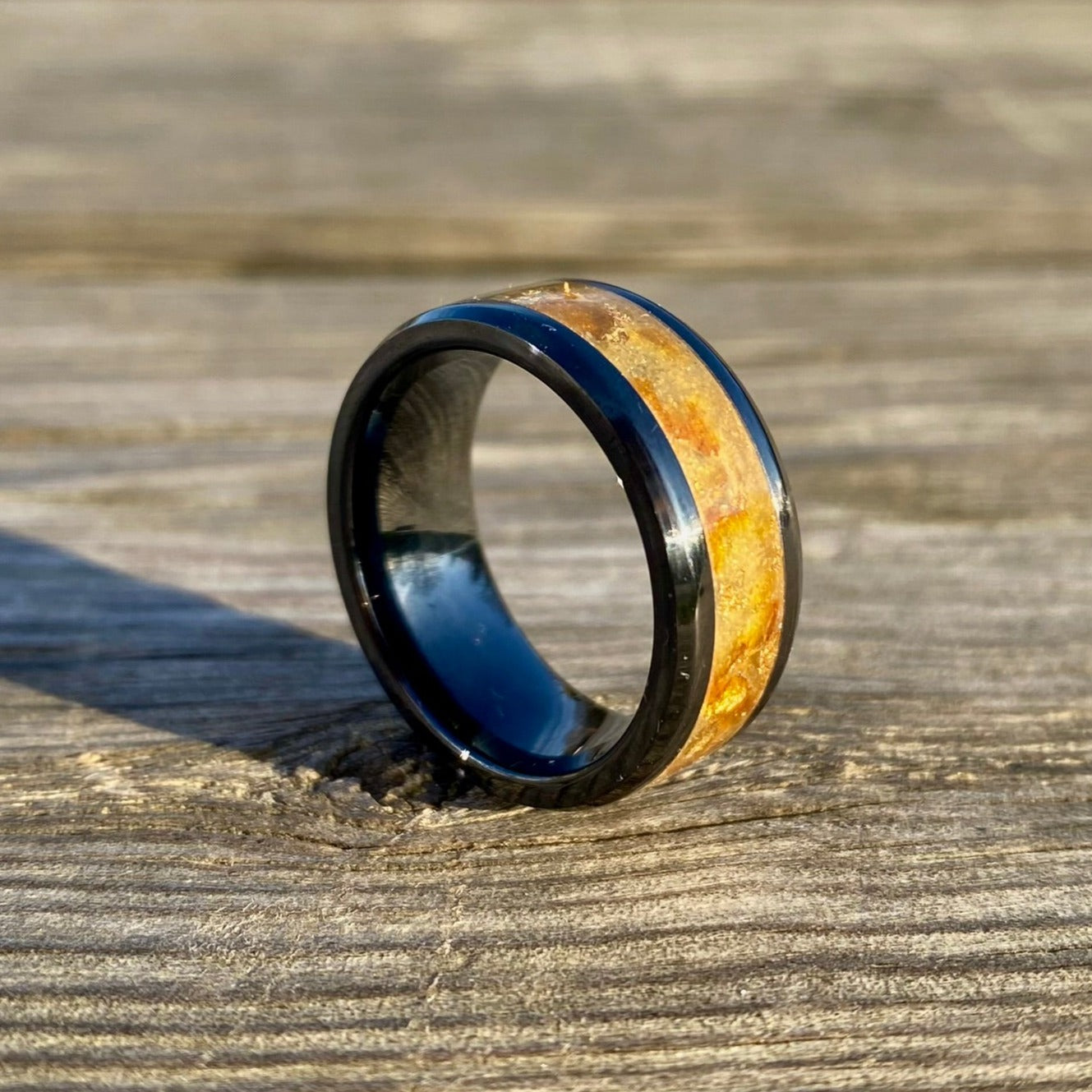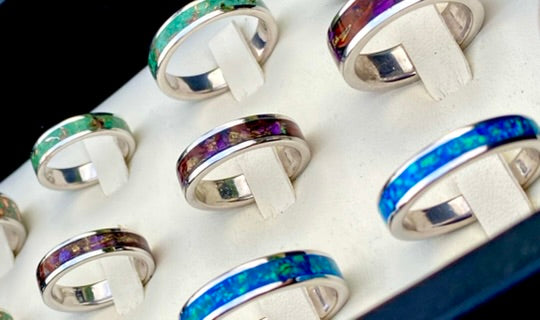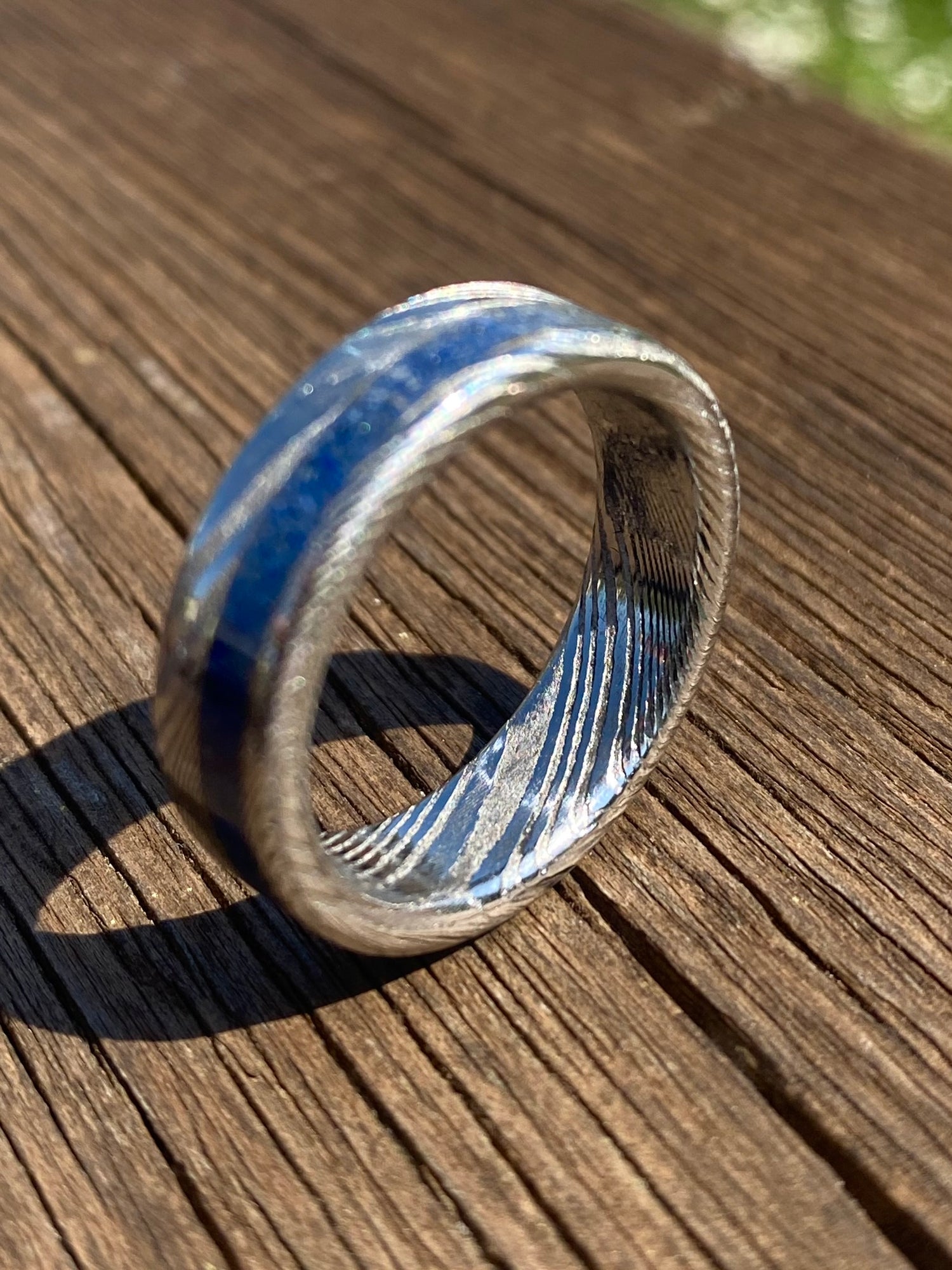🔍 Opal is an amorphous colloidal mineral made up of hydrated silica, present in numerous varieties of colors and iridescences in the form of veins, granules and crusts in eruptive and sedimentary rocks.
It is formed following a slow geological deposition of a colloidal silica gel at low temperature and has a variable water content inside it, usually between 6% and 10%.
𝐅𝐨𝐫𝐦𝐮𝐥𝐚 𝐜𝐡𝐢𝐦𝐢𝐜𝐚: SiO2 · n(H2O)
Hardness (Mohs): 5.5 - 6.5
Crystalline System : Amorphous
Luster: Vitreous, Waxy
⏳ The name opal originates from the Sanskrit word "upala ", which means precious stone , from which the Greek term ὀπάλλιος (opállios) and the Latin opălus derives, with the same meaning.
The ancient Greeks believed that opal was the result of tears of joy shed by Jupiter after his victory over the Titans. The Greek word "opallios" means "to see a change of color", which may be a derivation of the name of opal due to its play of changing colors.
🧪 Opal forms mainly inside cavities and cracks in sedimentary rocks, in geological environments with high water activity. During the formation process, water transports dissolved silica from surrounding rocks, precipitating under specific environmental conditions. The precipitation of silica leads to the formation of three-dimensional lattices of silicon dioxide, the main component of opal. The structure of opal is characterized by silica microspheres packed together, creating a porous structure. The play of colors of the opal is due to the diffraction of light through these silica microspheres, which influence its colours, shades and iridescence.
Among these stands out a variety with a whitish, milky base color with accentuated opalescence (recognized as " harlequins ") which takes the name of noble opal.
The size and arrangement of the silica microspheres within the structure of the opal are crucial to its unique color play effect. When light passes through the opal, it bends and separates into different wavelengths, thus creating interference between the light waves. This phenomenon, known as diffraction, is responsible for the formation of the colors we see in opal.
The silica microspheres act as a kind of prism, breaking down white light into a series of visible colors. The size of the microspheres determines which wavelength of light is diffracted and in what color it is displayed. Furthermore, the density and regularity of the arrangement of the microspheres influence the intensity and brilliance of the colors that appear in the opal.
Opal often displays an optical phenomenon known as color play, which manifests itself as a variety of bright colors that appear to move and change when the opal is tilted or rotated. This effect is due to light being refracted and reflected through the silica microspheres, thus creating the illusion of brilliant, changing colors moving across the surface of the opal.
Furthermore, factors such as the quality of the incident light and the angle of observation can influence the intensity and variation of the play of colors in the opal. This combination of factors makes each piece of opal unique and fascinating, with an infinite number of shades and color variations that make it one of the most admired gems in the world.
🌎 97% of the world's opal production is in Australia, where it represents the national stone. Other important deposits are found in Mexico and Ethiopia.







